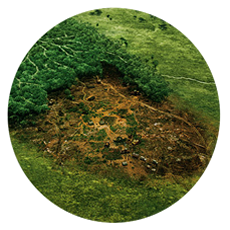Danger to Nature
Deforestation
Deforestation is the removal of a forest or stand of trees where the land is thereafter converted to a non-forest use. Examples of deforestation include conversion of forestland to farms, ranches, or urban use.
Although many realize the terrible impacts that deforestation has on our environment, they still continue to do it. Some people truely believe that the benefits of deforestation outweigh the consequences. In general, deforestation is often argued as a rather negative process, where its short-term economic benefits seem to fail in weighing down the long-term positives that are keeping the trees to exist. Aside from this, critics say that many of the economic advantages presented by the method are unsustainable, with alternative sustainable economic incomes existing to conserve trees and wildlife. Based on the advantages and disadvantages listed above, what would be your stand regarding deforestation?
- Wood Products - Through this method, people can extract natural resources, such as timber and charcoal, which can be used to benefit industries and businesses for commercial and economic growth.
- Job Opportunities - As deforestation increases demand from the lumber, manufacture, transportation and construction industries, more people will be needed to get the job done, thus an increase in employment opportunities.
- Palm Oil
- Soybeans
- Tree Replacement - In some cases, trees are being removed simply because of being dead or diseased. Through deforestation, these trees will be replanted with new, healthier ones.
- Residential Land - One common alternative use for cleared lands is residential development, which can contribute to the easing of house prices and more land to build on.
- Agricultural Land - By clearing out a section of woodland, people will have sufficient land space for agricultural purposes, allowing for the growing of crops. This means that food output will be increased for the local area.
- Endangers Wildlife - Naturally, trees serve as homes, food source and protection for animals and insects. They are a staple figure in an ecosystem, and without them, the whole region would fail, potentially leading to mass extinction of animals.
- Scars the Environment - Deforestation can change an area with beautiful healthy green trees to a dirt wasteland. It process can also bring about an aspect of noise pollution that is not too pleasurable either.
- Contributes to Climate Change - This is possible in a sense that deforestation leads to a greenhouse effect. As you can see, it contributes to the inability to reduce carbon dioxide in the atmosphere. As we all know, plants use this gas for their process to stay alive.
- Causes Soil Erosion - According to the Science American Heritage Science Dictionary, trees prevent the process of desertification. Deforestation can transform land that is once suitable for agriculture into a desert.
- Affects the Water Cycle - Trees and plants are essential to the water cycle process, so if they are removed, there will be nothing that will release water through evaporation back into the atmosphere, which can result in a drier climate.



